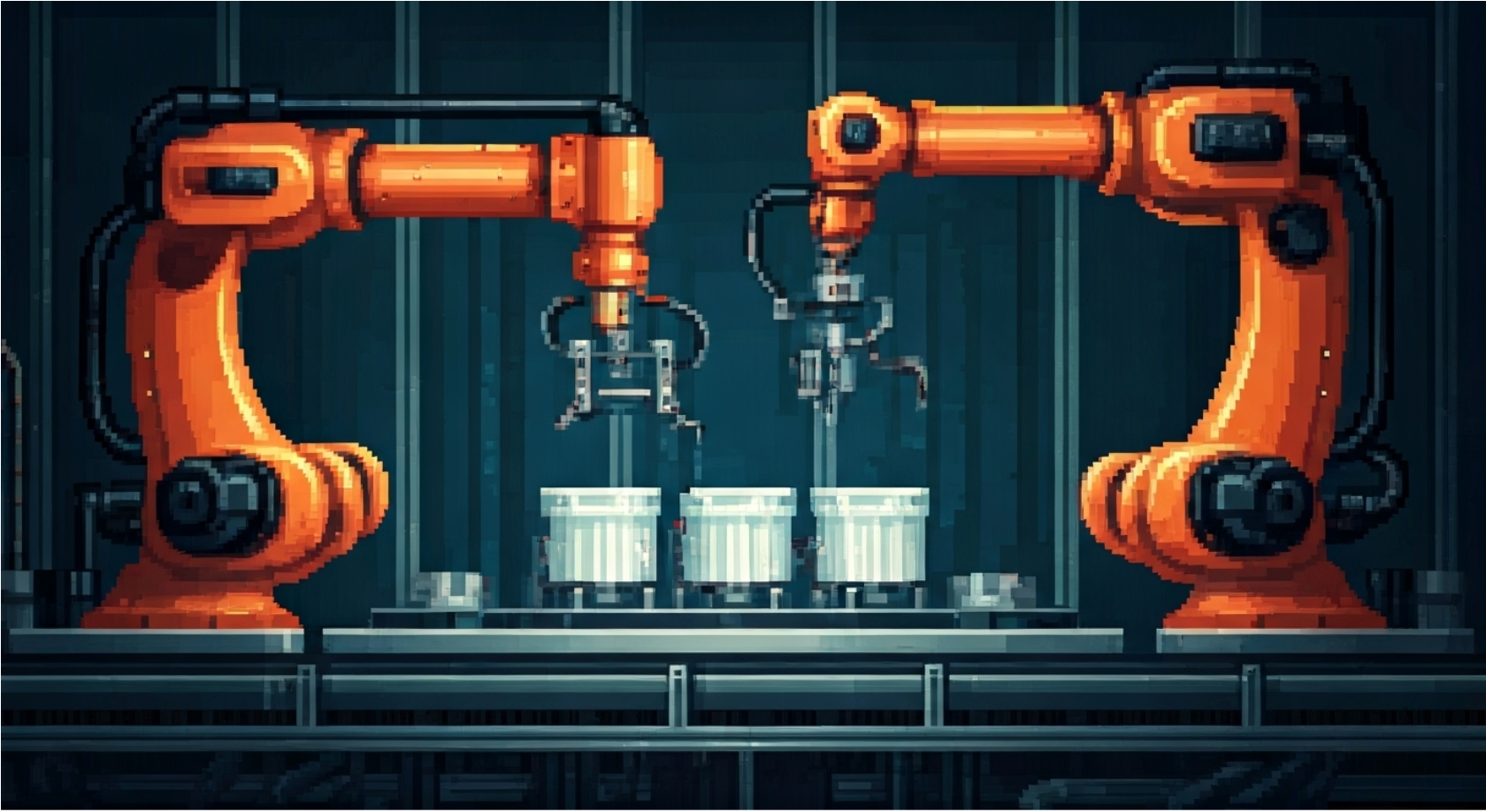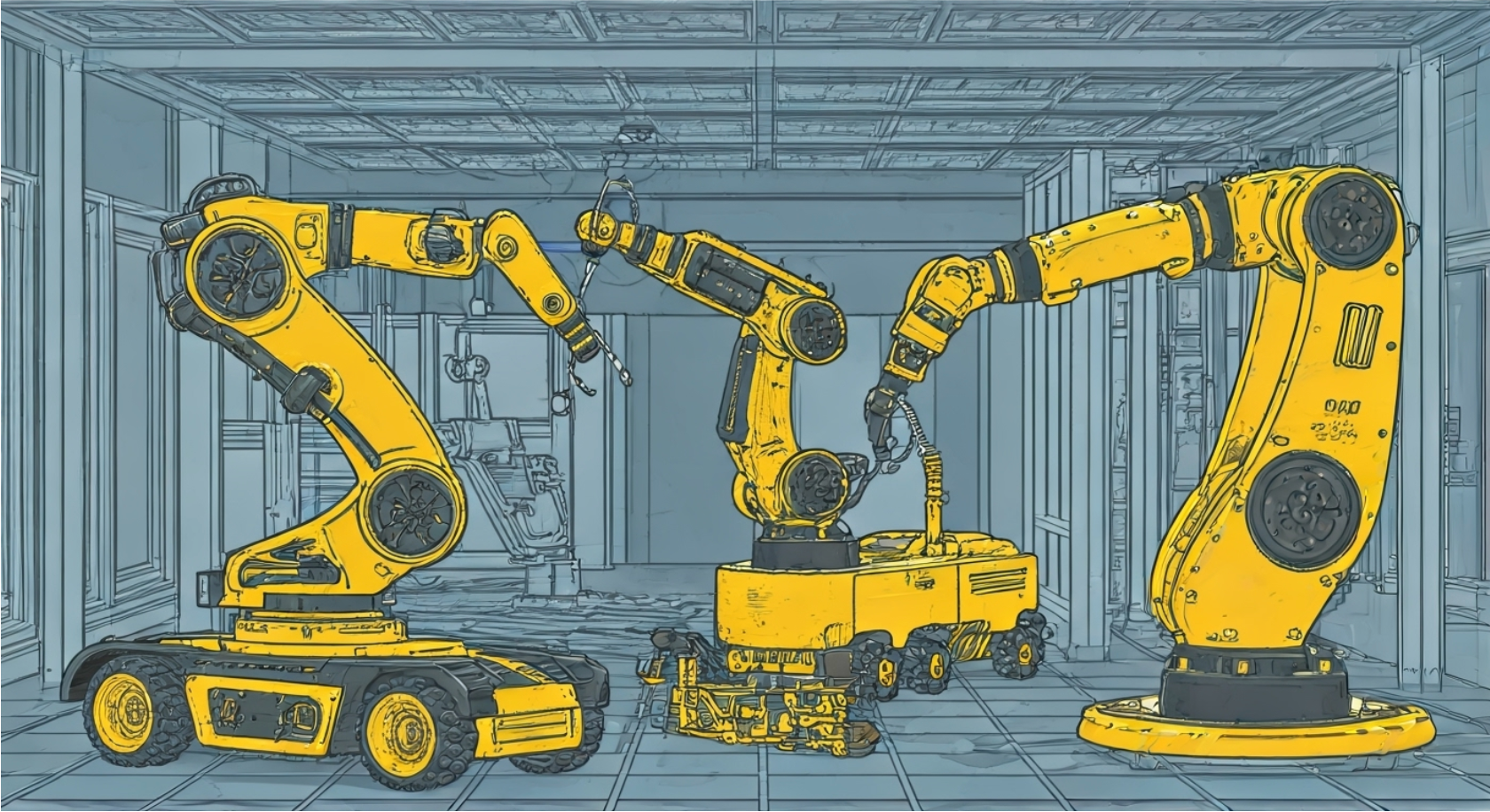Understanding Robots Automation: Benefits and Applications

Key Highlights
- Robots automation, powered by AI and machine learning, is revolutionizing industries by taking over repetitive tasks, boosting efficiency and accuracy.
- Robotic process automation (RPA) enables businesses to save time, cut costs, and enhance employee productivity by eliminating mundane operations.
- Emerging fields like healthcare and logistics are adopting automation for improved precision and smart systems integration.
- The combination of intelligent automation and legacy systems ensures seamless transitions across enterprise workflows.
- Robots automation not only simplifies processes but also unlocks new possibilities for intelligent decision-making and digital transformation.
Introduction
Robots automation is now a key part of many modern industries. It uses automation technology, artificial intelligence (AI), and machine learning to change the way companies work. Robots can take over repetitive tasks, which helps companies save time and money. These AI-powered systems also play a big role in digital transformation and help make daily operations faster and more correct. When businesses add automation, they see more work done, fewer mistakes, and things get finished quicker. This blog will talk about how important robots automation is, explain its main ideas, list its main parts, and look at how it changes different industries around the world. Let’s find out why this technology is so useful now.
Understanding Robots Automation: Key Concepts Explained
Defining Robots Automation in Modern Industries

Robots automation is about the use of programmable systems to do jobs that people usually do. With the help of artificial intelligence and different process automation tools, these systems copy how humans work, but with more precision and at a faster speed. Because of this, they are now used in almost every industry.
Robots automation comes in many forms. There are AI-driven RPA bots and cognitive automation tools that help businesses do difficult work in less time. As AI keeps getting better, automation technology is used for more than just repetitive tasks. Now, it includes things like communication mining, handling documents, and making important choices. This pushes industries into a new way of working that is smarter and more efficient through process automation.
Key Concepts and Terminology Explained
To understand robotic automation, you need to know some basic ideas and words. The most important ones are RPA, intelligent automation, and cognitive automation. Robotic process automation, or RPA, copies what people do. It is used to automate simple, rule-based jobs like moving data or filling out forms on different platforms.
Intelligent automation is the next step in process automation. It builds on RPA by using machine learning, NLP, and computer vision. With these, the system can make choices based on data and change when the tasks do.
Cognitive automation is a part of this too. It deals with unstructured data using ai to look at things like documents or emails and help with customer talks.
All of these types of automation work together. They let businesses handle both easy and hard jobs. This helps them use automation and ai to make their processes smarter and better able to handle new problems as they come up.
The Evolution of Robots Automation Technology
The journey of automation technology has moved forward fast. This is because of new things in machine learning, robotics, and how ai is now used. In the past, people had to use simple rule-based programming. Now, there are smart AI models that can learn and get better at tasks on their own.
This automation technology helps with fixing issues, especially when working with old legacy systems. These systems do not often have apis for direct automation. Software robots can copy what people do with these old systems. This makes the whole process smooth. Now, things like data entry and making decisions are done much faster, which helps a company to grow and scale up.
Today, robotics is about building machines that can do things on their own, in many lines of work. You can see robotic arms being used in building sites or see machine learning run by software robots. This type of automation work cuts down on errors. The way it works helps increase precision. Because automation technology keeps getting better, robotic automation will soon change how people work together and how many teams get their tasks done.
Core Components of Robot Automation Systems
Robot automation systems bring together hardware and smart software to work as one. They use automation-enabled sensors to collect real-time data. With the help of RPA bots, these systems can get tasks done with great precision.
Another important part is the use of autonomous mobile robots (AMRs). These robots help make workflows smoother. With sensors and bots, the systems can respond in real-time, collect data, and let people and machines work well together. All these parts help the automation systems stay flexible in different work settings. They also make the systems more efficient and allow them to grow as needed.
Hardware: Types of Industrial Robots
Industrial robots come in different shapes to fit certain jobs. Robotics like articulated arms, gantry robots, and autonomous mobile robotics (AMRs) work in many places to boost precision and make people more productive.
Articulated robots are great for assembly lines. They use sensors to move with care. AMRs work on logistics. They carry things by themselves in a warehouse to make sure orders go out fast. Gantry robots do the same job again and again, like welding or picking parts.
Robot Type. Primary Functionality
Articulated Robots. High-precision assembly and tool handling
AMRs Independent material transportation in facilities
Gantry Robots Repetitive, high-speed tasks like welding
These robots join sensors and automation. This mix gives them good accuracy, speed, and helps make work better for people in many kinds of places.
Software: Control Systems and Programming
Behind every robotic system is a set of software tools. These include control systems and frameworks for programming. Control systems use RPA software to handle tasks. This helps keep operations steady and clear.
Software automation uses APIs to help different platforms work together. This lets businesses bring their processes into one system without much trouble. With RPA programming and low-code tools, people who are not developers can create workflows. These tools also help people and robots work well as a team.
New ways in software robotics use machine learning and NLP with RPA tools. These new tools help robots understand unstructured data and handle jobs that need many decisions. This means automation with robotics can help companies that are looking to make changes and grow.
Major Benefits of Implementing Robots Automation

Robot automation gives the a lot of clear benefits to businesses. These include more simple processes, better flexibility, and better use of money. With new RPA tools, organizations get a positive effect in all parts of the work they do.
By using automation, companies cut down on mistakes made by people. Employees can get more done, and there is less wasted time on simple tasks. Automation is not only about being fast. It's also about making better systems that can change and grow with the business as their needs change.
Increased Productivity and Efficiency
Introducing automation with bots like RPA helps a company use its people better. Now people can work on strategy, and bots do the repetitive tasks. This makes work smoother and gets more done in less time. Here’s how automation helps keep things running well:
- Less Time on Routine Work: Bots and RPA bots handle these tasks much faster than humans.
- 24/7 Operations: Bots never need a break, so work keeps going all day and night with no pause.
- Precision: Using automation and RPA means tasks get done right every time, with no human mistakes.
- Streamlined Workflows: Automated systems help different steps in the process fit together more easily.
By making use of automation, companies get to use people, bots, and their skills in the best way. They can grow and take on more work, but still keep their quality high.
Enhanced Safety and Cost Reduction
Using robots and automation in the workplace makes it safer by taking care of risky tasks. This means there is less chance that employees will get hurt. Automation also helps cut costs because it uses resources better. Here are some key benefits:
- Safety for Healthcare Applications: Robots step in to help manage drugs so people don’t have to do it.
- Cost Efficiency in Logistics: Automation and robotics in logistics help reduce the money spent on workers.
- Minimized Errors via Image Recognition: When using image recognition, robotic systems get it right more often, even in places that could be dangerous.
- Flexible Operations: When operations grow or shrink, your costs don’t go up by the same amount.
With all these points, adding robots and automation is not just good for your pocket, but it’s also a smart decision for the future.
Key Applications of Robots Automation Across Sectors
Robots and automation are now used in many fields like healthcare and financial services. They help these important areas move forward with digital transformation. Companies use automation tools for precision when making things or when handling human resources. This shows the many use cases and great flexibility that robots and automation bring.
End-users get more out of automation when they combine cognitive automation with self-driven platforms. This mix changes the way they do work. It can make customer service better and also change how logistics work. As robots enter more jobs, we see new and big benefits that were not possible before.
Manufacturing and Industrial Production
In manufacturing and industrial work, automation with robots makes things more efficient. It does this by taking care of detailed jobs on assembly lines. These machines are set up to work on their own, so they can do tasks with great precision.
For example, robots take charge of jobs like welding, cutting, and moving materials in large automation projects. They do these tasks accurately again and again. Using robotics helps keep things the same each time and also speeds up how fast work gets done.
Adding robotics into the process cuts down on waits and makes the products better. This matters a lot for industries that want precision in what they make. Robots also help set up systems, so production plants can meet their goals with new automation methods.
Healthcare, Logistics, and Other Emerging Fields
Healthcare and logistics are both growing fast because of robots and automation. In healthcare, automation helps human resources by working on insurance claims. It also uses natural language processing to handle medical records. In logistics, many companies use AMRs to make delivery chains run smoother and faster.
Now, new fields like human resources also use robots. For example, AI helps with screening people who apply for jobs. These real-world uses show that automation can cut down on manual work. This makes it easier for different fields to grow and work better.
Conclusion
To sum it up, understanding robots automation goes beyond just knowing the technical side. It is also about seeing how it can change many types of work, like automation in healthcare and other fields. By using robots, companies can do more work, keep people safer, and spend less money to run things. The different ways you can use automation—from making products to healthcare—show just how valuable and flexible it is for people today. As businesses keep changing, it will be good to keep up with the newest news and trends in automation. This helps you get the most from robots automation. If you want to know how robots automation can help your business, get a free consultation today. Start moving toward better work and new ideas.
Frequently Asked Questions
What is the difference between robots automation and robotic process automation?
Robots automation is about using ai-based systems in many types of work. Robotic process automation, sometimes called rpa, is more about using software robots to handle tasks that always follow rules. Rpa tools help with process automation by speeding up tasks that get done over and over. Robots automation includes hardware and smart systems, not just software robots.
How do businesses determine if robot automation is right for them?
Businesses need to look at use cases, ongoing work problems, and where automation can help. Projects that have a lot of repetitive tasks are good for RPA implementations. It is good to start by testing small automation projects first. This can help businesses learn and then expand their automation plans step by step.
What are the initial costs and ROI of robot automation in the U.S.?
Initial costs will change based on the rpa software you use, the tools, and how big the automation project is. In states like Michigan, companies say they get their money back within a few months. This is because automation technology helps people save work time, make less errors, and get more done at work with rpa.
How does robot automation impact job opportunities and workforce skills?
When there is more automation, people do not have to do as much manual work. But, it gives them the chance to work in areas that use AI a lot. This helps the workforce get better at innovation. When you put human intelligence and AI together, people can build new skills. They get to move to tasks that have higher value and can do more important work.
What future trends are shaping robots automation in the United States?
In the future, we will see more AI-powered automation grow with digital transformation. Tools such as natural language processing, process mining, and new types of cognitive systems will keep adding to the power of automation. This will shape the U.S. workforce by bringing smarter and more scalable solutions. These technologies will also change the way people work and help make many jobs better and faster.
What are the advantages of using robots for automation?
Robots for automation offer numerous advantages, including increased efficiency, enhanced precision, and reduced operational costs. They can work tirelessly without breaks, minimize human error, and handle repetitive tasks, thereby allowing human workers to focus on more complex activities. This ultimately leads to improved productivity and higher quality outputs.



